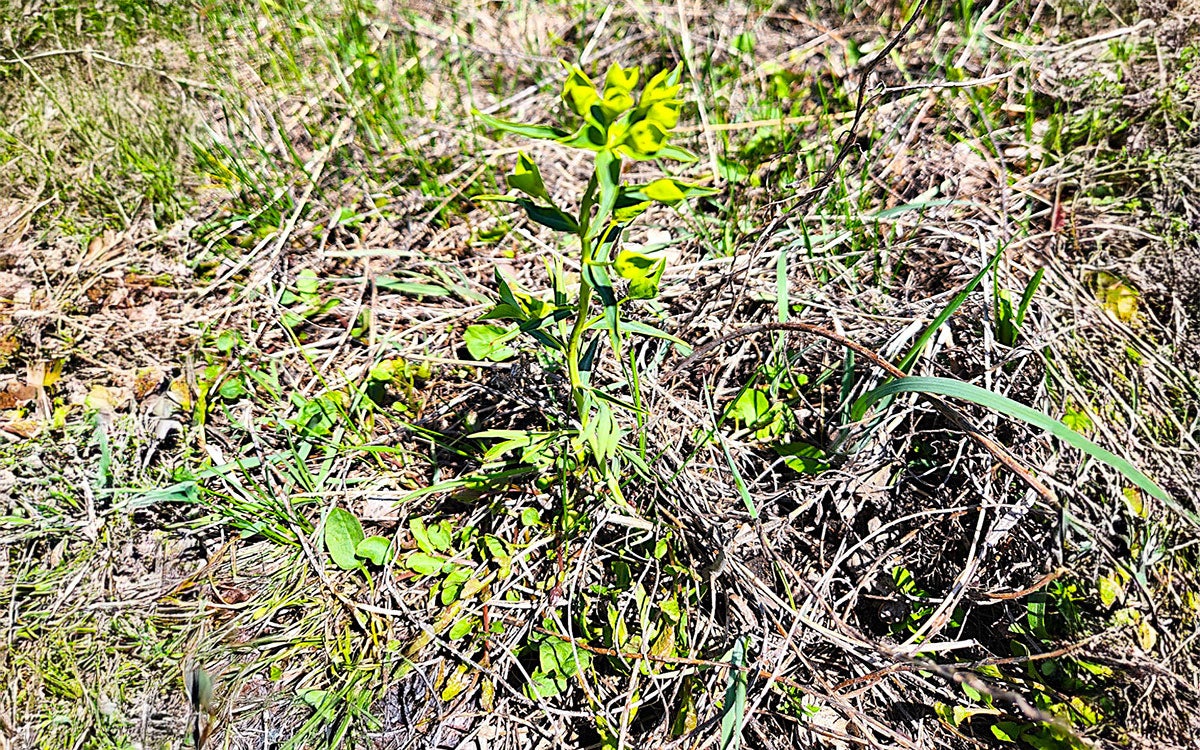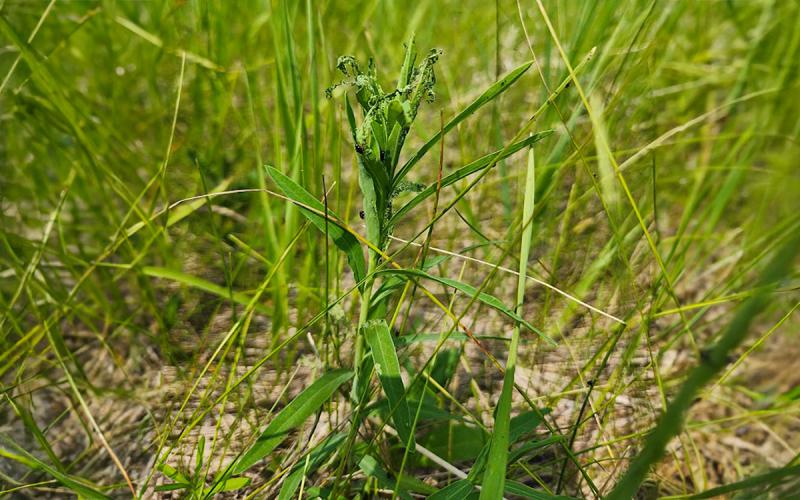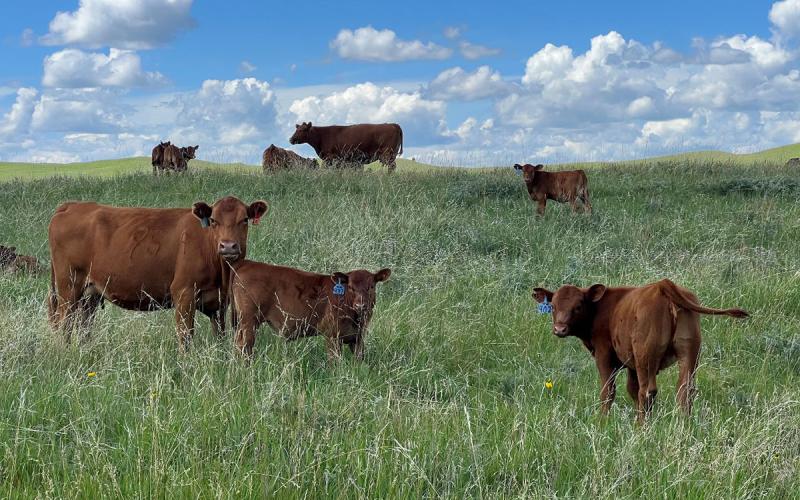Written collaboratively by Eric Jones, Philip Rozeboom, Jill Alms, and David Vos.
Leafy spurge is a difficult-to-control noxious weed in South Dakota. If no management tactics are utilized, leafy spurge can reduce the value and productivity of pasture and rangeland, and it can displace desirable vegetation and wildlife. Effective management relies on scouting to ensure the proper timing and implementation of the tactic.
Recent Scouting
Scouting was conducted on May 2, 2025 to determine if any leafy spurge has germinated and the corresponding growth stages. Leafy spurge plants were germinated and growing; however, extreme care was necessary to determine what was leafy spurge or desirable grass (Figure 1). While most plants were still in early stages of growth, some plants were starting to produce yellow bracts (a bract is a modified leaf associated with a flower, as shown in Figure 2). The importance of yellow bracts is two-fold: 1) Flowers will be produced soon, which will lead to seed production and 2) Herbicides applied in the spring are made at this growth stage to increase effectiveness. While many leafy spurge plants will not be at this advanced stage, it is important to start thinking about your management plan now.


Management

Livestock may graze leafy spurge at the early growth stages to minimize vegetative growth. Mowing can also minimize vegetative growth. If grazing and/or mowing is utilized, these tactics will have to be conducted regularly to minimize growth, spread, and seed production. Leafy spurge beetles can also provide vegetative management of leafy spurge. Purchasing and releasing beetles is usually more effective, but naturally occurring populations of these beetles can be seen feeding on leafy spurge plants (Figure 3). Leafy spurge beetles have great utility in areas that are hard to access (i.e. topography) or have sensitive plants/land areas (i.e. river or wetland) nearby. Routine scouting should occur to determine if released beetles are feeding within the infested area.
Herbicides will likely be more effective if used alone. Spring applications can often provide season-long control, but fall follow applications may need to occur as well. Refer to the latest Weed Control: Pasture and Range guide for a complete list of herbicides that are effective on leafy spurge.
There are multiple tactics to manage leafy spurge, all of which should be utilized and in combination where appropriate. Now is the time to scout to determine where the infestations occur and what tactics will be the most appropriate and effective.

